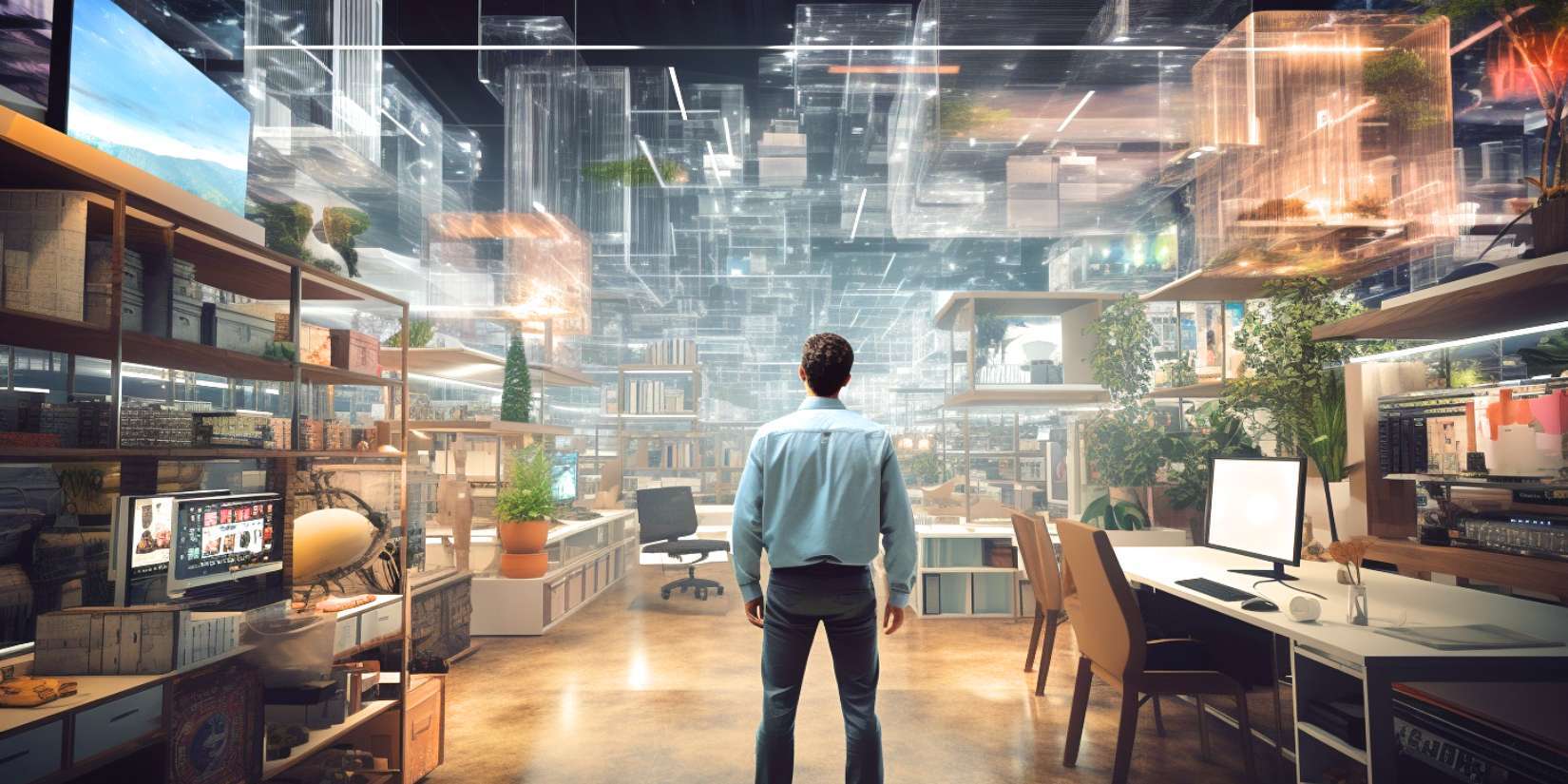A hardware store is an exciting place, but it’s also often a confusing maze. But what if the advanced technology of augmented reality (AR) and virtual reality (VR) combined with a Virtual AI Assistant could transform this place?
The digital assistant in the DIY store
The smell of fresh wood, rows of paint pots, tools and endless options for DIY projects. Imagine that instead of meandering through countless aisles, you put on AR glasses or open an app on your smartphone. An AI Assistant designed in 3D appears and asks, “How can I help?”
In-depth look at technology: from AR to VR
Augmented Reality (AR): This technology augments reality by superimposing digital information onto the real world. So you could point your smartphone at a drill and instantly see what materials it’s suitable for, how to use it, and what other customers think about it.
Virtual Reality (VR): VR immerses you in a completely digital world. Instead of physically visiting the hardware store, you could first explore it virtually, testing products or even attending workshops in a simulated environment.
How AI Assistants Could Revolutionize the Home Improvement Store Visit
1. expert advice on call: we often lack the expertise to make the right decision. A Virtual AI Assistant, fed with data and expert knowledge, could provide detailed information and advice that previously only an experienced employee could offer.
2. virtual DIY workshops: Instead of attending physical workshops on weekends, you could attend from home with VR.
3. augmented shopping: with AR, you could see how a light switch or wallpaper color would look in your actual living space.
4. personalized experiences: Based on your previous purchases, AI Assistant could make customized product suggestions.
Advantages of this revolution
Efficiency: Faster finding of products, reduction of incorrect purchases and less waiting time through interactive aids.
Education: Continuous learning through AR and VR tutorials.
Customer satisfaction: A personalized shopping experience could strengthen customer loyalty.
Challenges and concerns
Costs: The development and implementation of such technologies requires considerable investment.
Acceptance: Not everyone is tech-savvy. There could be a learning curve for many users, especially the older generation.
Data protection: With digitization comes data collection. Clear protocols and security measures are needed to protect customer privacy.
Look into the future
With technology giants already investing heavily in AR and VR, it’s only a matter of time before such technologies become commonplace. It’s not hard to imagine that a future visit to the DIY store will be more like a technological experience than a traditional shopping trip.
While there are certainly hurdles to overcome, home improvement stores could soon become interactive, learning, and customer-focused experience centers. It will be exciting to see how technology and traditional retail mix in the coming years. In a world that is constantly evolving, the construction market of the future could be a forerunner of this technological revolution.
